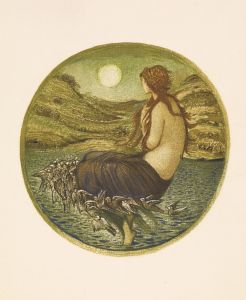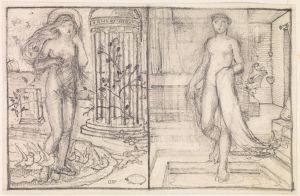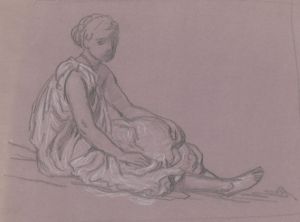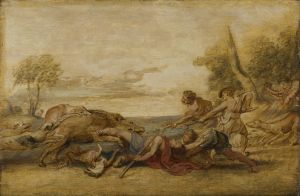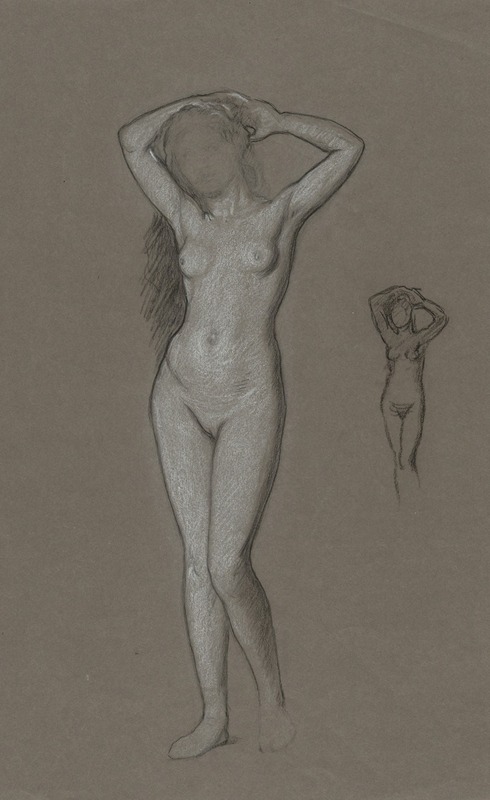
Study for the Figure of Venus
A hand-painted replica of Elihu Vedder’s masterpiece Study for the Figure of Venus, meticulously crafted by professional artists to capture the true essence of the original. Each piece is created with museum-quality canvas and rare mineral pigments, carefully painted by experienced artists with delicate brushstrokes and rich, layered colors to perfectly recreate the texture of the original artwork. Unlike machine-printed reproductions, this hand-painted version brings the painting to life, infused with the artist’s emotions and skill in every stroke. Whether for personal collection or home decoration, it instantly elevates the artistic atmosphere of any space.
Elihu Vedder, an American symbolist painter, created "Study for the Figure of Venus" during a period when he was deeply engaged with mythological and allegorical themes. Vedder, born in 1836, was known for his unique style that often blended classical subjects with a mystical and sometimes surreal approach. His work was part of a broader 19th-century movement that sought to explore themes beyond the visible world, delving into the realms of dreams, mythology, and the subconscious.
"Study for the Figure of Venus" is a preparatory work, which suggests that it was part of Vedder's process in developing a larger or more detailed piece. Such studies were common among artists of the time, serving as a means to experiment with composition, form, and technique before committing to a final version. This particular study focuses on Venus, the Roman goddess of love and beauty, a subject that has inspired countless artists throughout history.
Vedder's depiction of Venus is notable for its departure from the traditional representations of the goddess. While many artists portrayed Venus in a highly idealized manner, emphasizing her divine beauty and grace, Vedder's interpretation might reflect his symbolist leanings, potentially infusing the figure with a more introspective or enigmatic quality. This aligns with Vedder's broader body of work, which often imbued classical themes with a sense of mystery and depth.
The study likely showcases Vedder's skill in rendering the human form, a testament to his academic training and his exposure to European art traditions. Vedder spent significant time in Italy, where he was influenced by the Renaissance masters and the vibrant artistic community of the time. This influence is evident in his meticulous attention to detail and his ability to convey emotion and narrative through the human figure.
Vedder's work, including "Study for the Figure of Venus," reflects the cultural and artistic currents of the late 19th century, a time when artists were increasingly interested in exploring the symbolic and the spiritual. His paintings often invite viewers to look beyond the surface, encouraging a deeper contemplation of the themes he presents.
While specific details about "Study for the Figure of Venus" are limited, it remains an important piece within Vedder's oeuvre, illustrating his engagement with classical mythology and his unique artistic vision. The study serves as a window into Vedder's creative process and his ability to reinterpret timeless themes through the lens of his own artistic sensibilities.





